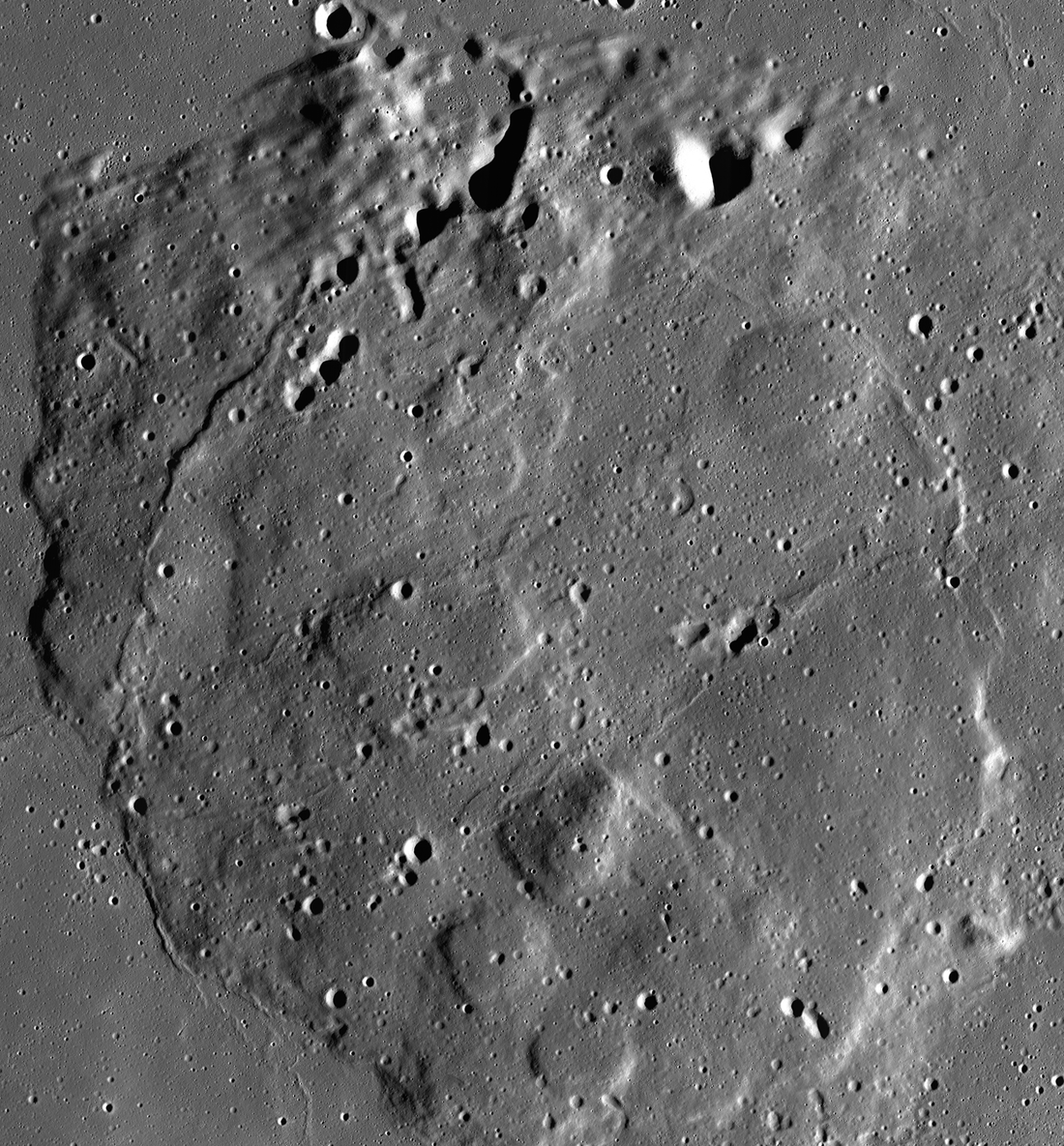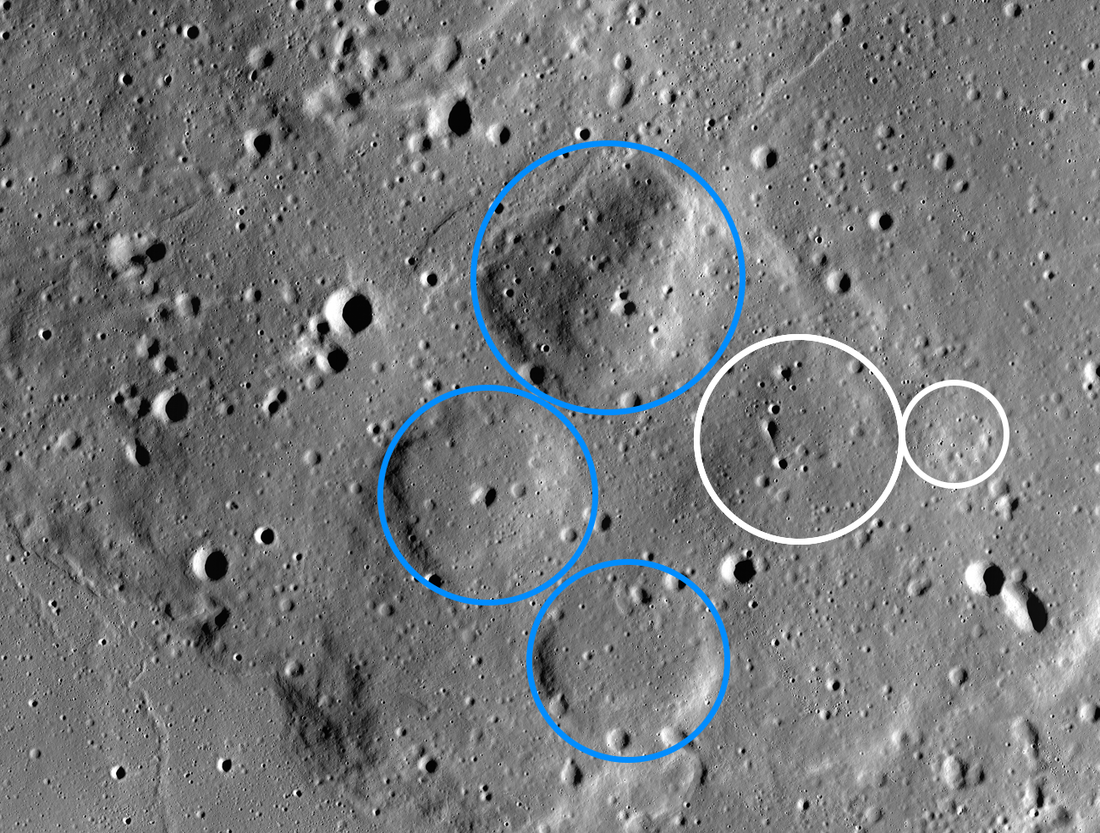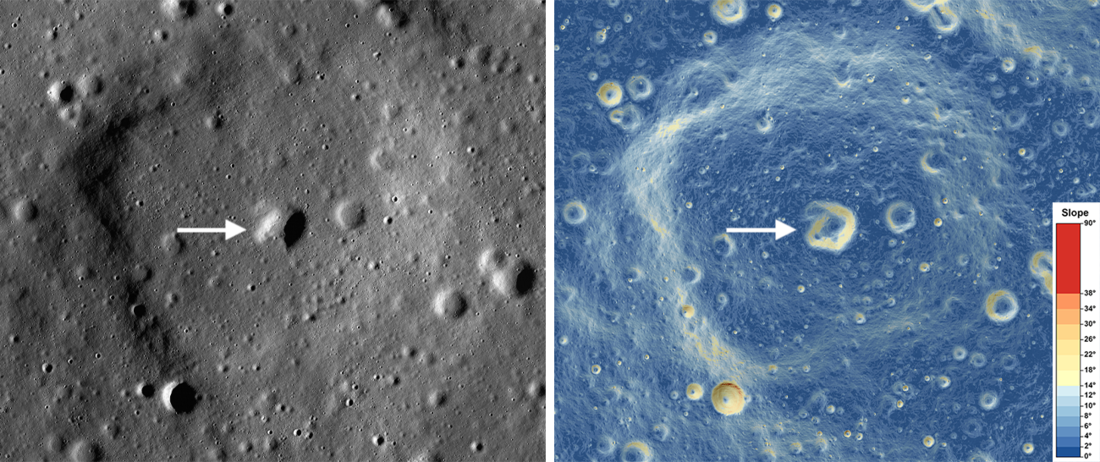
Located in the northern Oceanus Procellarum ("Ocean of Storms") on the lunar nearside, the Rümker region hosts multiple volcanic complexes. One of these complexes, Mons Rümker, rises to 1,300 meters above the surrounding mare surface and provides a fascinating glimpse into lunar volcanic history. Spanning an area of about 4,000 square kilometers, Mons Rümker features a diverse terrain of domes, sinuous rilles, ridges, and lava flows, making it a valuable site for studying volcanic landforms. The oldest section, characterized by rough, lineated terrain along its northern edge, is theorized to have formed from ejecta of the Iridum impact approximately 3.8 to 3.7 billion years ago. Subsequently, basaltic volcanism further shaped Mons Rümker around 3.7 to 3.5 billion years ago. In this featured image, you can see the volcanic domes that were once active, now lying dormant after billions of years.

These domes likely formed from slowly erupting basaltic magma, which created small shield volcanoes on the surface. Researchers categorize them into two types: steep-sided domes and shallow domes. Steep-sided domes have flank slopes steeper than 5 degrees and are relatively tall, while shallow domes are shorter (less than 200 meters) and have gentler slopes. The majority of Mons Rümker's domes are located on the complex's western side, with a heavy concentration in the southwest.

Mons Rümker was initially considered as a landing site for China's Chang'e 5 lunar lander, due to its evidence of ancient volcanism and varied impact ejecta. However, the lander ultimately touched down at an alternate site about 170 kilometers northeast of Mons Rümker in December 2020. The mission returned approximately 1.7 kilograms of lunar samples to Earth, providing researchers with valuable insights into the geologic history of the northern Oceanus Procellarum. The mare unit from which the sample was collected was determined to be about 1.5 billion years old—significantly younger than the estimated age of Mons Rümker. With its unique volcanic history still unexplored on the ground, Mons Rümker remains a compelling target for future crewed or robotic lunar missions.
Explore the entire Mons Rümker mosaic with the Zoomify below!
Related Featured Images
Gruithuisen Domes: A Lunar Mystery
Mons Hansteen: A Window into Lunar Magmatic Processes
Age of the Compton-Belkovich Volcanic Complex
Published by Steven Nystrom on 12 April 2025